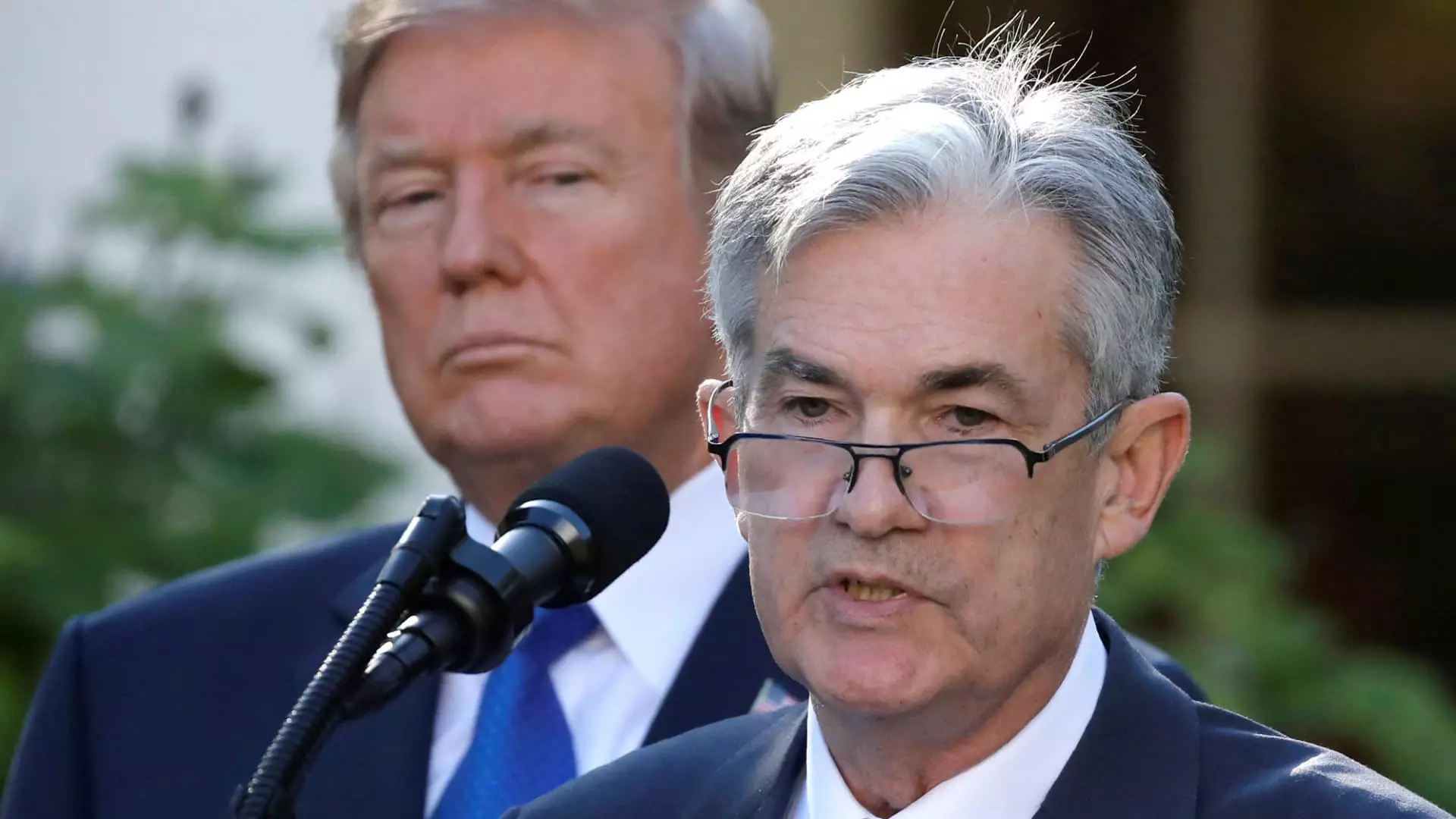As the heat intensifies, Federal Reserve Chair Jerome Powell finds himself grappling with increasing political pressure and public discontent. The recent barrage of criticism from former President Donald Trump has underscored a growing unease around the Fed’s current monetary policy. Despite this tumult, it’s anticipated that the Fed will keep interest rates unchanged following a two-day meeting, raising questions about the implications of such a stance. For many observers, this decision embodies a troubling inertia, one that fails to acknowledge the nuanced complexities of the modern economy.
The economics behind the federal funds rate are intricate but crucial. It fundamentally dictates the cost at which banks lend to each other overnight, cascading into any number of borrowing and savings rates that average Americans encounter daily. That interconnectivity suggests that high-interest rates significantly stifle economic activity. Trump’s argument that a persistently elevated federal funds rate hampers consumers and businesses alike has merit, especially in an environment already beleaguered by stubborn inflation.
The Costs of Inaction
With a rate cut now anticipated only after several months, the plight of struggling consumers only deepens. Economic luminaries such as LendingTree’s chief credit analyst, Matt Schulz, poignantly highlight the “challenging” atmosphere created by the juxtaposition of soaring interest rates, unrelenting inflation, and pervasive economic uncertainty. As Americans increasingly feel the pinch of living costs, the simplicity of the Fed’s expected inaction sends the message that policymakers are out of touch with the realities facing the everyday citizen.
Credit card debt looms as a particularly harsh consequence of high-interest policies. With a concerning average annual percentage rate surpassing 20%, the fiscal burden on consumers becomes even heavier. Schulz observed how financial institutions often resort to increasing rates to safeguard themselves in uncertain times, which amplifies the adversities faced by the financially vulnerable. Yet, the ability for consumers to combat these challenges appears stronger than many realize. By leveraging good credit to switch to better loan terms, individuals can proactively minimize their payments while waiting for elusive rate cuts.
The Housing Dilemma
In the housing market, the ramifications of the Fed’s monetary policies become painfully clear. Despite the general expectation of stability in mortgage rates, current figures hover around 6.9% for a 30-year fixed-rate mortgage, a scenario that undoubtedly discourages would-be homebuyers from entering the market. The constraints of both high-interest rates and limited housing inventory effectively price out many potential buyers, exacerbating the ongoing crisis of housing affordability. Schulz’s assertion that no significant changes are expected in the immediate future leaves little room for optimism.
In a separate sector, car purchasing has become equally daunting. Growing prices for new vehicles fueled by external factors, including Trump-era trade policies, represent yet another hurdle for consumers. Average five-year loan rates concertedly approach the 7.24% mark, equating to burdensome monthly payments that, for some households, now exceed $1,000. Individuals wishing to make major purchases must engage carefully with financial institutions, highlighting a counterintuitive reality: securing favorable financing ahead of time can lead to substantial savings, an option that too many overlook in this climate.
Student Loans and Savings Accounts: A Mixed Bag
Federal student loan rates illustrate a different dynamic in the financial landscape. While these rates remain somewhat insulated from Fed-induced fluctuations due to their fixed nature, the broader economic struggles are manifesting in fewer options for borrowers. Current undergraduate rates stand at 6.53%, but that doesn’t address the dismay creating additional headwinds for those grappling with student debt. The lack of forgiveness options has compounded the challenges faced by many graduates.
Conversely, some good news exists for savers. High-yield savings accounts are showcasing returns exceeding 4%, providing a measure of relief against the Fed’s inaction. Although the Fed’s influence over deposit rates is indirect, the correlation between stable funds rates and attractive savings yields is evident. Nonetheless, the fact that a sizable portion of the populace, including retirees, may find financial comfort from competitive interest rates feels overshadowed by the broader economic burdens.
In sum, while the Federal Reserve may be attempting to navigate the stormy waters of economic recovery, the political pressures surrounding figures like Jerome Powell underscore an unsettling reality: the costs of their inaction ripple through every sector, leaving many Americans to bear the brunt of our discordant monetary policies.

